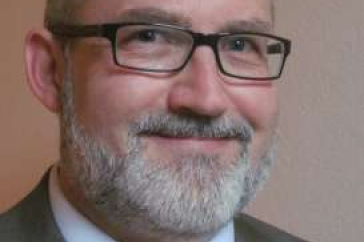Lightning Researcher Is New Peter T. Paul Chair in Space Sciences at UNH

Caption: Joseph Dwyer has been named the Peter T. Paul Chair in Space Sciences within the Institute for the Study of Earth, Oceans, and Space (EOS) and the College of Engineering and Physical Sciences at the University of New Hampshire Photo Credit: D.J. Dwyer.
DURHAM, N.H. - Joseph Dwyer, department head and professor of physics and space sciences at the Florida Institute of Technology (FIT) and a leading expert on lightning, has been named the Peter T. Paul Chair in Space Sciences within the Institute for the Study of Earth, Oceans, and Space (EOS) and the College of Engineering and Physical Sciences at the University of New Hampshire. He will join the UNH faculty at the start of the fall semester in 2014.
"Professor Dwyer has an extremely exciting, high-profile research program that is sure to capture the attention of the university community," says Harlan Spence, director of EOS. "We are grateful to Peter Paul's enduring vision for space science to allow us to welcome this internationally acclaimed space scientist to the UNH faculty this fall."
Dwyer currently leads the Lightning Research Group at the Geospace Physics Laboratory in the department of physics and space sciences at FIT. His primary research is focused on understanding the underlying physics of lightning discharges, which occur about four million times per day; lightning strikes cause more deaths and injuries in the U.S. than either hurricanes or tornados. Dwyer and colleagues have sent rockets tethered to the ground by a copper wire into thunderheads and succeeded in harnessing individual lightning strikes that produced intense bursts of x-ray radiation.
"He is generally credited with creating a new field of research on high-energy physics in lightning that originally grew out of observations made by orbiting gamma-ray observatories, including NASA's Compton Gamma Ray Observatory, in which UNH played a key role," says Mark McConnell, an astrophysicist in the Space Science Center (SSC) and chair of the UNH physics department.
"Professor Dwyer brings both a new research area to the SSC as well as skills that utilize our existing expertise in building spaceflight instrumentation for measuring high-energy radiation," says SSC director Lynn Kistler. "This combination will provide us with many new opportunities for future projects."
"I am honored to be named the Peter T. Paul Chair in Space Sciences and look forward to working with the students and new colleagues at UNH. The EOS Space Science Center is one of the best places in the world to do space-based research and will provide me with the opportunity to expand my research in exciting new directions," says Dwyer. He received a Ph.D. in physics from the University of Chicago in 1994 and was a research scientist at Columbia University and the University of Maryland before joining the faculty at FIT in 2000.
The chair is the result of a 2001 gift from Troy native and UNH alumnus Peter T. Paul, a 1967 graduate in business administration. Paul is the CEO of Headlands Asset Management LLC, an investment management company he founded in 2008. In addition, he is the owner of West Biofuels, a research and development venture, and Peter Paul Wines. He is also chairman of The Headlands Foundation, a nonprofit organization he founded in 1995.
The University of New Hampshire, founded in 1866, is a world-class public research university with the feel of a New England liberal arts college. A land, sea, and space-grant university, UNH is the state's flagship public institution, enrolling 12,300 undergraduate and 2,200 graduate students.
-30-
Photographs to download:
http://www.eos.unh.edu/newsimage/joe_dwyer_lg.jpg
Caption: Joseph Dwyer
Credit: D.J. Dwyer.
/unhtoday/news/releases/2014/05/images/lightningsimulation1-8179.jpg
Caption: Scientists launch small rockets trailing a spool of Kevlar-coated copper wire into thunderstorms to trigger lightning strikes and make detailed measurements on the ground.
Credit: University of Florida.
Latest News
-
December 4, 2025
-
November 26, 2025
-
November 6, 2025
-
November 5, 2025
-
October 24, 2025














































